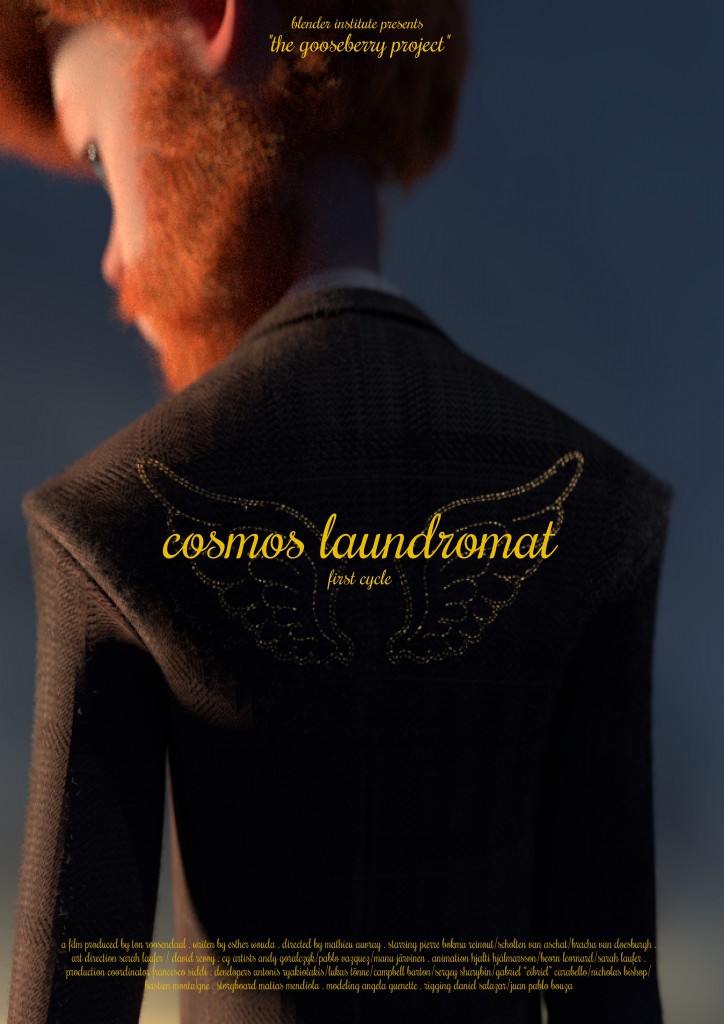Value Creation Through Digital Commons: Complicating the Discourse

Cosmos Laundromat by Blender Institute, 2015.
Post by Julia Velkova, Södertörn University
This post is part of a partnership with theInternational Journal of Cultural Studies, where authors of newly published articles extend their arguments here on Antenna.
By the end of 2015, the number of open content works online licensed under a Creative Commons license is estimated to pass beyond one billion[1]. Approximately one-tenth of them are hosted on major sites such as YouTube, Wikipedia, Flickr, Public Library of Science, Scribd and Jamendo, and represent music, photos, animation films, online comics, texts and illustrations that are made explicitly available by their authors with the intent to encourage their circulation, use and the creation of derivative works.
One widely spread assumption about these forms of copyleft-licensed media is that they are a result of unpaid, volunteer labor, often done with the intention to disrupt broader capitalist structures or circuits of production through new forms of organising. Another common view is that while individuals give away their artifacts to the public, the market economy exploits this content by integrating it in the circuits of capitalist production and by extracting value from it without contributing back. These portraits, while true to a certain extent, do not give justice to the much more complex interactions between market and commons that inform the creative practices and intensions of producers engaged in creating digital commons, ranging from free and open source software development and hacking, to producing media of industry quality or within the creative industries themselves. Not least, these views disregard the possibility that the producers of commons are experimenting with models to financially sustain and capitalize on their own work, not necessarily standing in opposition to the markets. At the same time it is admittedly difficult to grasp the way in which economic value is generated through commons if looking just at the final artifacts that are made – software, or media since they are often shared free of charge.

Image: Morevna Project, Anastasia Mayzhegisheva, 2015
In the period between 2013 and 2015 I observed ethnographically the processes of creation of two large scale animation film projects anchored in the domain of commons and the techno-artistic communities surrounding them. One of the films was Cosmos Laundromat[2], part of the larger project Gooseberry by the Blender Institute[3] in Amsterdam, Netherlands; the other one was The Beautiful Queen Marya Morevna[4], part of the larger Morevna project[5] by an informal collective located in Gorno-Altaysk, a town of 40,000 inhabitants in Southern Siberia, Russia. The projects were particular in several ways: they gathered artists and programmers to develop and improve free and open source software for computer graphics production, namely the largely popular program Blender for 3D animation; and Synfig for 2D vector animation. These programs represent the non-proprietary equivalents of software such as 3D Studio Max, Adobe After Effects and Maya. At the same time, the production process, and the short animation films were made public and shared as commons, together with all their assets.
If looking at the main software used in the productions, respectively Blender and Synfig, they both have remarkably gone through a process of de-commodification in the course of which they have been converted from proprietary to free software programs, and their development taken over by their user communities. This suggests that not only the industry does appropriate products of the commons, but also reverse processes do occur. De-commodification helped Blender to grow significantly in the course of about fifteen years to an average of 300,000 user downloads a month(ref), and Synfig to about 20,000 a month over slightly over than six years. This growth has in both cases been largely due to the organisation of software development as practice-driven process that emerges from making animation films through a public process anchored in sharing the code, the production process and the components (assets) of the films made. This approach has so far been applied on five[6] open animation films by the Blender Institute, allowing the Blender software user community to grow. As a result Blender has also been incorporated at the core of the professional production practice of many small commercial animation studios across the world. It has also inspired others, such as Morevna project to experiment with making open-films but in a different animation genre. The approach has also led large hardware manufacturers (such as Intel and Dell), actors from the game industry (Valve Corporation) and IT corporations such as Google to provide support to Blender in the form of powerful hardware, monthly monetary donations[7] or contributions targeted at the development of specific features through, for example, the Google Summer of Code program. The direct industry support provided for developing Blender has contributed to the establishment of independent technical infrastructure that has in turn enabled the creation of open animation films. Within the production frameworks of the films themselves more funds are secured with the help of institutions of public cultural funding, philanthropic foundations, private companies, other open source communities, as well as individuals. The financial resources that are generated do not therefore stem from sales of media, but are a result of combining multiple production practices, that of films, software, and training materials that cut across the interests of multiple organisations and as a result attract financial support through the increased range of beneficiaries.
These interactions help the software and film projects ultimately to economically sustain themselves, and develop software, as well as media owned by the public. The latter could at the same time be regarded as a form of critique, from within, of the prevailing systems of cultural production that is more anchored in pragmatic considerations around the possibility to exercise craft autonomy within the cultural industries, rather than being representative of ideologies of the political left.
[1] Link: https://stateof.creativecommons.org/report/
[2] Link: http://gooseberry.blender.org/
[3] Link: https://www.blender.org/institute/
[4] Link: http://morevnaproject.org/anime/
[5] Link: http://www.morevnaproject.org
[6] Link: http://www.blender.org/features/projects/
[7] Link: http://www.blender.org/foundation/development-fund/
[For the full article, see Julia Velkova and Peter Jakobsson, “At the Intersection of Commons and Market: Negotiations of Value in Open-Sourced Cultural Production,” forthcoming in International Journal of Cultural Studies. Currently available as an OnlineFirst publication: http://ics.sagepub.com/content/early/2015/08/06/1367877915598705.abstract More information on related research can be found at Julia Velkova’s blog: http://phd.nordkonst.org/]


